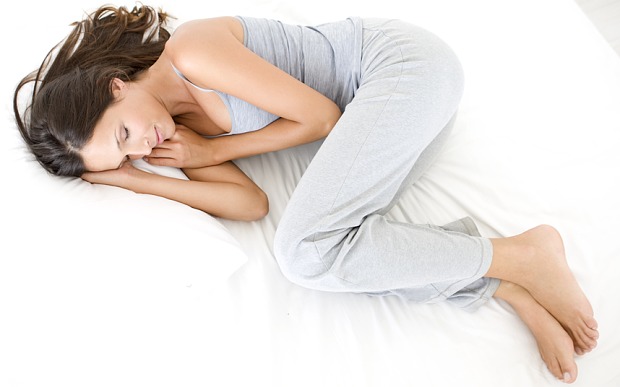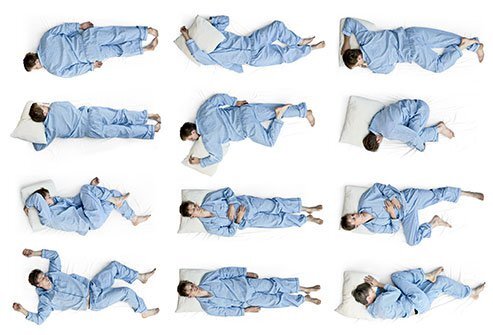Best Sleeping Positions And The Elephant Man
Bed Posture, Back And Neck Pain, And Maximizing Restorative Sleep- Advice From A Mattress Engineer
If you suffer from back, neck, leg, or even foot pain, your “bed posture” may be either making your pain worse, or not allowing your body to heal while you are in a resting state. Considering we sleep for about 25% of our lives, making good use of the mechanisms of productive and restorative sleep is essential in adding more years, and more joy, to our lives.
Our bodies recharge and rejuvenate all night long, our brain resets and rewires itself, our organ systems are busy generating hormones, repairing themselves, and go into production mode at night, and our connective tissues, muscles, and bones recharge, grow, repair themselves, and regenerate. Making sure you are properly supported and placing your body in its best “neutral position” is absolutely essential.

To understand how important sleep posture is, I always think of the story of The Elephant Man. The one thing that James Merrick could not do was to be able to lie down when he slept, due to his severely contorted body, and he was forced to sleep in a sitting position.
One day, he decided that he had lived long enough, that in the end his life was wonderful, but he wanted- just once- to be able to sleep like any other human, lying flat. It was the most uncomfortable and painful thing he could do. He laid down, on his back, and died, his throat being obstructed leaving him unable to breathe.
His desire to lie comfortably and imagine what it might be like to rest his head and shoulders and try to get one night of comfort, was overwhelming. Most of us are able to choose, correct, reset, and realign our sleeping positions to improve our health.
For those of us suffering with scoliosis and other spinal and vertebral problems, neuropathies (nerve pain and other nerve disorders), our best bed is to experiment, but keep in mind that each of us is a unique biological creation requiring a different set of rules and permissions granted to us by our bodies.
That said, there are a few ideal sleep positions that often relieve pain and improve the quality of sleep, even allowing us to get more REM sleep, the deepest form of sleep (Rapid Eye Movement) that truly provides the rest we need.
The key thing to consider with finding your ideal sleeping positions is minimizing pressure. Pressure, along with improper alignment of the spine and the neck, as well as improper head support can reduce the quality of our sleep drastically.
You can take a look around our site and find plenty of information about which mattresses are best for the sleep positions described below. Reducing pressure, and maintaining straight and level spine alignment will likely drastically improve your sleep hygiene.
Further, another key element to a proper sleep position is a great pillow. As a mattress designer and engineer, and insomniac myself, finding the right pillow for me as 50% of my sleep posture dynamic. People often ask me, “Marc, what is the perfect pillow?’. On this site you can read my personal choices for the top 10 pillows we recommend, chosen from a review of over 125 pillow options. Click here to check them out.
The Best Sleep Positions For Restorative Sleep
Before we get right to it with ideal bed positions, I’d like to throw in a key element often left out of these sorts of discussions, and that is entry and exit from your mattress. Sounds ridiculous, but many people strain for even injure themselves by not transferring in and out of bed properly.
Even if you are young, pouncing into bed and bounding out of bed is not good mammalian behavior. Entry into your nest should be an easy movement- first sitting, then a kind of natural roll sideways to that sweet spot in your bed. This maneuver calms your body and promotes an almost instantaneous relaxation response in your musculature and blood vessels.
Exiting from your bed should also be gradual, and an easy roll to the side. Sit on the side of your bed for 60 seconds, as this allows your body to adjust blood pressure and acclimates you to the long vertical session of 14-16 hours ahead. Incredibly, many falls and head injuries, whether young or old, happen getting out of bed, especially leaping out like a frightened animal. Be careful.
1. sleeping on your back
Sleeping on your back is the healthiest position for sleep, if you can tolerate it. Because it evenly distributes load horizontally and reduces pressure points on hips and shoulders, it typically works for people without hip, shoulder, and certain types of back pain. It is also excellent for lymphatic drainage and blood flow by placing your body’s central of gravity in a more neutral position. However, if you have any obstructive breathing issues, and you use a CPAP machine, for example, using a pillow while sleeping on your back can cause respiratory blockage. If you are a back sleeper and want to maintain an open airway, use a low profile pillow, like a memory foam or latex type, that is 4” or so in height. You may need to train yourself to sleep on your back, which takes some time. Be patient and try to fall asleep that way. Using a weighted blanket may help too, by creating a hugging effect to keep you still and calm.
2. on your side in fetal position
Sleeping in the fetal position is often a very natural pose for sleeping, and curling up is actually beneficial to the spine, reducing compression and allowing oxygenated blood to get into spaces between vertebrae. This position evenly distributes weight the full length of the body’s largest surface- your back .
If you have a one sided injury to a particular shoulder or hip, it also reduces pressure points while insuring comfortable alignment of the head, neck, and spine. Place a small, rectangular pillow, a flat pillow- ideally memory foam or gel foam, no thicker than 6”, between the knees if on your side, as this will provide additional support and maintains the neutral position of your spine.

I also believe people over 55 should use this position as much as possible, making an extra effort to curl the back as much as you can. Curl your back until it feels relatively straight, not bowed. Bringing your knees close to your chest also aligns your spine naturally. A great chiropractor will tell you that fetal position posture can be wonderfully soothing to your back.
-
Get into bed and carefully roll and gently curl your back up, drawing knees to chest.
-
Position a pillow, preferably low profile, to support the head and neck.
-
Draw the knees up towards the chest until the back is relatively straight.
3. Belly Sleeper
For many, this sleep posture will sound odd and uncomfortable. However, I have spoken to hundreds of people through the years who are born belly sleepers, especially women, but with a fair number of guys in the group.
Typically these sleepers simply can’t find another comfortable sleep position, and this is their go-to default position. I advise, again, using a thinner low profile contour style pillow that properly elevates your belly to keep your spine as straight as possible. This position typically works best with a slightly firmer mattress, too, so if your are shopping for a bed, make sure you keep this in mind. Our Trusted Dealer page has some firmer mattress options to to consider.
This position is often comforting to people with degenerative disc disease and herniated discs as well. Belly sleeping may help heal recent surgical wounds on the back by allowing them to breathe and by reducing compression and oxygen deprivation.
-
Get into bed and roll on to belly down position.
-
Place a slim pillow underneath the abdomen and hips to raise the mid-section and straighten spine.
-
Use either no pillow, or a low profile pillow for the head.
4. back sleeper in zero gravity position
The number of people who have left their beds and found comfort in a recliner as a sleep surface is astounding. I have spoken with many folks who because of back pain, neck issues, leg pain, sciatica, spinal conditions like isthmic spondylolisthesis, and even migraine headaches, find that perfect sweet spot on an adjustable recliner. If this is what brings good quality sleep, and you don’t mind sleeping alone, this is often the only solution.
However, now that adjustable beds are a hugely popular option, I highly recommend considering looking into one. An adjustable base can allow you to share a bed with your partner, has an infinite number of positions, including “zero gravity” settings which tilt your body in such a way that weight is evenly distributed across your body surface, can reduce sciatic pain, leg and foot pain with the ability to elevate your feet, and even reduce neck and upper back pain by elevating the head section of the adjustable base.

You can check out our Adjustable Base page, too, if you’d like to see who we have chosen as our Trusted Dealers on Amazon, where name brand bases are sold at great prices, with free delivery often included.